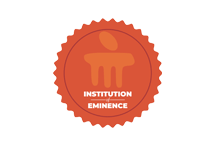Acute kidney injury post-percutaneous nephrolithotomy (Pnl): Prospective outcomes from a university teaching hospital
Document Type
Article
Publication Title
Journal of Clinical Medicine
Abstract
Acute Kidney Injury (AKI) after percutaneous nephrolithotomy (PNL) is a significant complication, but evidence on its incidence is bereft in the literature. The objective of this prospective observational study was to analyze the incidence of post-PNL AKI and the potential risk factors and outcomes. Demographic data collected included age, gender, body mass index (BMI), comorbidities (hypertension, diabetes mellitus), and drug history—particularly angiotensin converting enzyme inhibitors (ACE inhibitors), angiotensin II receptor blockers and beta blockers. Laboratory data included serial serum creatinine measured pre-and postoperation (12, 24, and 48 h), hemoglobin (Hb), total leucocyte count (TLC), Prothrombin time (PT), serum uric acid and urine culture. Stone factors were assessed by noncontrast computerized tomography of kidneys, ureter and bladder (NCCT KUB) and included stone burden, location and Hounsfield values. Intraoperative factors assessed were puncture site, tract size, tract number, operative time, the need for blood transfusion and stone clearance. Postoperative complications were documented using the modified Clavien– Dindo grading system and patients with postoperative AKI were followed up with serial creatinine measurements up to 1 year. Among the 509 patients analyzed, 47 (9.23%) developed postoperative AKI. Older patients, with associated hypertension and diabetes mellitus, those receiving ACE inhibitors and with lower preoperative hemoglobin and higher serum uric acid, had higher incidence of AKI. Higher stone volume and density, staghorn stones, multiple punctures and longer operative time were significantly associated with postoperative AKI. Patients with AKI had an increased length of hospital stay and 17% patients progressed to chronic kidney disease (CKD). Cut-off values for patient age (39.5 years), serum uric acid (4.05 mg/dL) and stone volume (673.06 mm3) were assessed by receiver operating characteristic (ROC) curve analysis. Highlighting the strong predictors of post-PNL AKI allows early identification, proper counseling and postoperative planning and management in an attempt to avoid further insult to the kidney.
DOI
10.3390/jcm10071373
Publication Date
4-1-2021
Recommended Citation
Pillai, Sunil; Kriplani, Akshay; Chawla, Arun; and Somani, Bhaskar, "Acute kidney injury post-percutaneous nephrolithotomy (Pnl): Prospective outcomes from a university teaching hospital" (2021). Open Access archive. 2924.
https://impressions.manipal.edu/open-access-archive/2924


